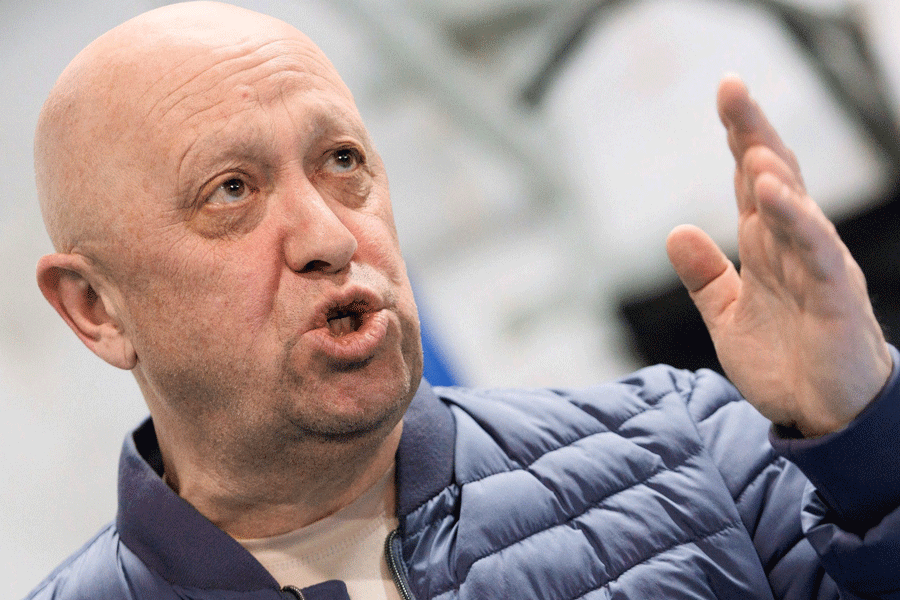As Russian soldiers braced in their trenches in Ukraine, a charismatic military leader suddenly marched his forces on the capital. He promised to save the nation from traitors who were pushing it toward catastrophic military defeat.
The rebels stopped just short of their goal, but the fallout from the mutiny contributed to pulling Russia apart soon after. The already weakened military collapsed, the government crumbled and the country descended into a devastating civil war.
These events took place in 1917, but they appeared to be front of mind for President Vladimir V. Putin as he reacted to a lightning raid toward Moscow by mutinous mercenaries this weekend. The rebellion had once again exposed the danger of Russia’s involvement in a prolonged, seemingly unwinnable war, showing how domestic strain can suddenly crack the country’s authoritarian facade of stability.
Putin, an amateur revisionist historian, devoted a significant part of his initial televised address during the mutiny to Russia’s downfall in World War I.
“Intrigues, infighting, political games behind the backs of the army and the people have led to immense shocks, the collapse of the military and the state,” he said on Friday night.
He appeared to be referring to the aftermath of Russia’s February Revolution in 1917, when discontent over Russia’s disastrous prosecution of the war toppled the monarchy and paved the way for the Bolshevik takeover eight months later, during the better-known October Revolution.
It was in that volatile period that the charismatic nationalist officer General Lavr Kornilov marched his forces from the front on Petrograd, modern St Petersburg, the capital at that time. His goal was to take power and restore order.
Kornilov’s actions echo the choices made by the rebel mercenary leader Yevgeny V. Prigozhin. Both strongmen turned on the Russian rulers who had cultivated them for their own political ends and made a last-chance armed dash for power to avoid being supplanted by adversaries.
Both men justified their actions by presenting themselves as the nation’s last defence against chaos, using the media of their time to cultivate an image of mystery and strength.
Kornilov, a Siberian Cossack, appeared in public surrounded by a bodyguard of tribal Turkmen cavalrymen, and posters with his image adorned Moscow streets in 1917.
For his part, Prigozhin captured the imagination of many Russians with his graphic and expletive-laden social media videos from the front lines, surrounded by heavily armed members of his Wagner paramilitaries with covered faces.
The eventual leader of Russia’s anti-Bolshevik armies, General Anton Denikin, described Kornilov as “a banner. For some of counter-revolution, for others of the salvation of the Motherland”.
Using similar symbolism, Prigozhin called his forces’ raid on Moscow “the march of justice”. Both men came within hours of travel to their destinations, halting only when the prospect of mass bloodshed became a certainty.
Kornilov’s crack cavalry division stopped just outside Petrograd in the face of sabotage from Left-wing railway workers and entreaties from civil society leaders. His coup attempt, although short-lived, had dealt a mortal blow to the already weakened caretaker government of the moderate socialist Aleksandr Kerensky, leaving him powerless to forestall a Bolshevik insurrection a month later.
The failure of Kornilov’s plan also accelerated the disintegration of the Russian army. Just as in Putin’s invasion of Ukraine last year, Russia entered World War I in 1914 expecting a quick conflict. Instead, its army became bogged down in a losing war of attrition against the better-armed Germany in the territories of modern-day Ukraine and other western parts of what had been the Russian Empire.
“The consequences for the army command were catastrophic,” the Yale University historian Laura Engelstein wrote about Kornilov’s coup attempt in her book, Russia in Flames.
Kornilov’s chief field officer, General Aleksandr Krymov, shot himself shortly afterwards. Kornilov and several other senior military commanders were arrested. On the front lines, soldiers increasingly refused to carry out orders, deserted and shot their officers, as Germany pressed deeper into Russia.
Similarly, Prigozhin’s battle-hardened armoured columns travelled from occupied Ukraine and stopped about 125 miles outside Moscow, after encountering minimal resistance from forces loyal to the Kremlin.
Prigozhin’s dash for Moscow punctured Putin’s aura of invincibility, exposing the shakiness of the security apparatus behind his rule.
New York Times News Service











